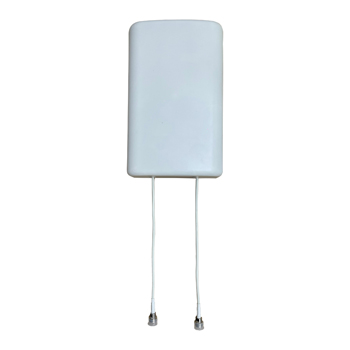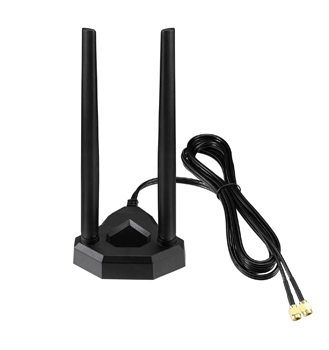Table of Contents
ToggleWhat is WLAN
WLAN stands for Wireless LAN network. Two devices can communicate wirelessly by using the WLAN technology. In WLAN there is no cable required between the devices. The devices can communicate by using Wi-Fi and transmit all the data over the Wi-Fi. It’s totally different from the traditional LAN network. Both LAN and Wlan perform the same function but the Lan cable is required between the two devices in order to transmit the data and the WLAN performs the same function without using a cable. It transmits all the data over Wi-Fi. All the new devices come with Wlan technology. All the new devices use the DHCP technology in order to connect the new devices with the main device.
Difference between WLANs and Access Points
A WLAN (Wireless Local Area Network) allows two or more devices can connect and communicate wirelessly to establish a WLAN within a specific area like a home, school or building, etc. It provides a wireless network for communication using radio waves as its carries. Within a small area, WLAN provides high speed e.g., on campus or small building.
An Access Point is a device that acts as a base station for all the wireless devices that are in your local area network (LAN). By using an access point, we can extend the wireless coverage of an existing network. It provides high-speed internet which is directly connected from a router to an access point. It established the links between end devices using Wi-Fi. In other words, access points is used to transmit data between wired and wireless networking device.
How does a WLAN work?
Wireless local area network uses radio waves to transmit information from one end to another end. All the data over the internet are sent in the form of packet and each packet contains unique Media Access Control (MAC) address which matches with the mac address of the end devices, so that packet is forwarded from source to destination. That’s why it offers a way to build a LAN without cables.
WLAN is the latest technology in the Field of wireless so WLAN is almost use in every network topology. It also supports the mesh network If the mesh network is wireless based then the WLAN is used in the mesh network.
Pros and Cons of Wlan
Pros:
- The main advantage of a Wireless local area network (LAN) it can connect the devices wireless instead of using cables.
- Users can easily connect with the network like Mobiles, Laptops Tablets, etc from anywhere they want.
- WLAN range can be easily managed by extending one or more repeaters.
- WLAN also reduces the value of ownership.
- It does not require any cables or wires. Moreover, communication is possible if the user is moving.
- It Provides a high-speed rate in a small area.
- WLAN has scalability, adding users to the network is simple as just assigning the required authentication.
- WLAN has the device flexibility that supports a wide range of devices, such as laptops, mobiles, computers, and IoT devices.
- It is easy to connect with Wlan that are free from cable and port limitations.
Cons:
- WLANs are not secure as compared to wired networks. Any device can try to connect to the WLAN.
- It uses radio waves for communication which needs special care to protect it from encryption.
- Wireless LANs are slower as compared to wired networks.
- Using WLAN communication is not secure because it can be accessed by unwanted users.
What can Tesswave do for you?
Tesswave provide 100+ antenna products and you can contact us for antenna customized solutions, get in touch with us today to get a Free quote.
Get an Instant Quote
Get a FREE quote and we will contact you within an hour
Is a Wlan secure?
WLANs are easy to deploy, expand your network, and cost-effective. IF malicious person can connect with the same network, then he can easily access the internal network and easily take over all the Network.
Wlan can be secured by using the MAC address Filtering. All the new devices come with the latest security options a bad actor can easily enter in to the network by using the Ip spoofing. A bad actor can also enter the network. If Wi-Fi authentication is not used in the network, then the attackers can easily enter the network. We can secure the WLAN by using different encryption methods WPA, WPA2 etc that comes in the router.
Is WLAN and Wi-Fi the Same Thing?
These two wireless technologies are slightly different. Wi-Fi (Wireless Fidelity) is a trademark of WFA, and it is also used in wireless communication technology that follows the IEEE 802.11 standards. Wi-Fi is just a type of WLAN. While WLAN means any wireless local area network no matter what technology we are going to use. WLAN is the term that describes a wireless network without physical wires running into the client-end device. It provides network communications using radio waves and complies with 802.11 standards. In other words, WLAN is the actual network while Wi-Fi is just technology in this network system.
How WLAN is Created?
A WLAN can be configured in two ways.
1. Adhoc:
In this configuration, a WLAN connects endpoint devices such as mobile phones and computer workstations without the use of a base station. Ad hoc wireless networks commonly use Wi-Fi direct technology. Ad hoc WLANs can facilitate fundamental peer-to-peer (P2P) communication and are simple to set up.
Only two or more endpoints’ devices, such as PCs or mobile devices, with built-in radio transmissions, are needed for an ad hoc WLAN. One user launches the network and becomes visible to the others after configuring the network for ad hoc mode.
2. Infrastructure:
An example of a WLAN configured in infrastructure mode is a Wi-Fi network in a home or workplace. A base station, which provides internet access, connects all the endpoints so that they can all communicate with one another.
A fundamental infrastructure of WLAN requires only a few components: a wireless router that serves as the base station and endpoints, which can be computers, mobile devices, printers, or other devices. Most of the time, the wireless router also serves as an internet connection.
Conclusion
WLAN is a new technology and all the new devices come with the WLAN technology. Finally, as technology advances, people can expect to see more wireless communications around the world. Wireless communications have numerous advantages and have the potential to make the world a much more efficient place.








